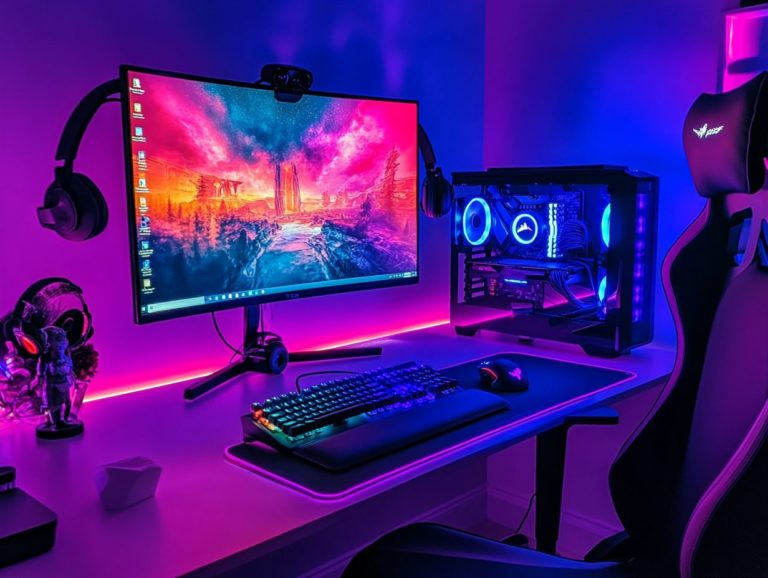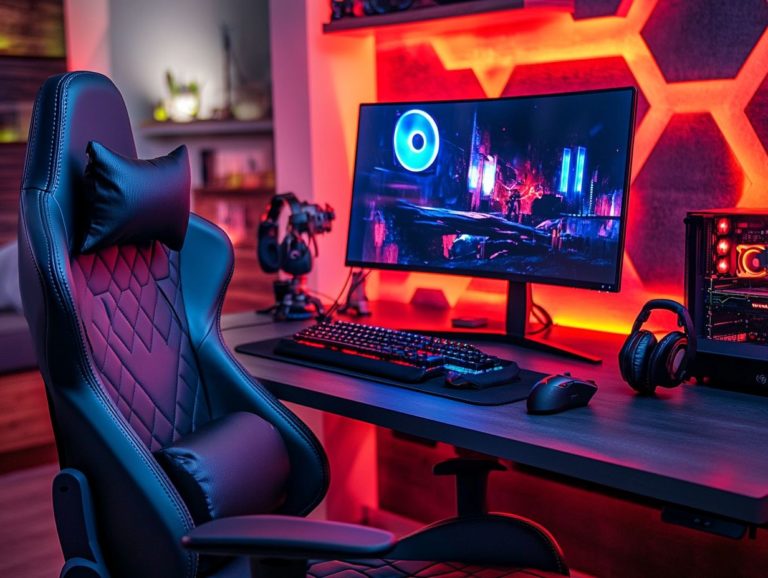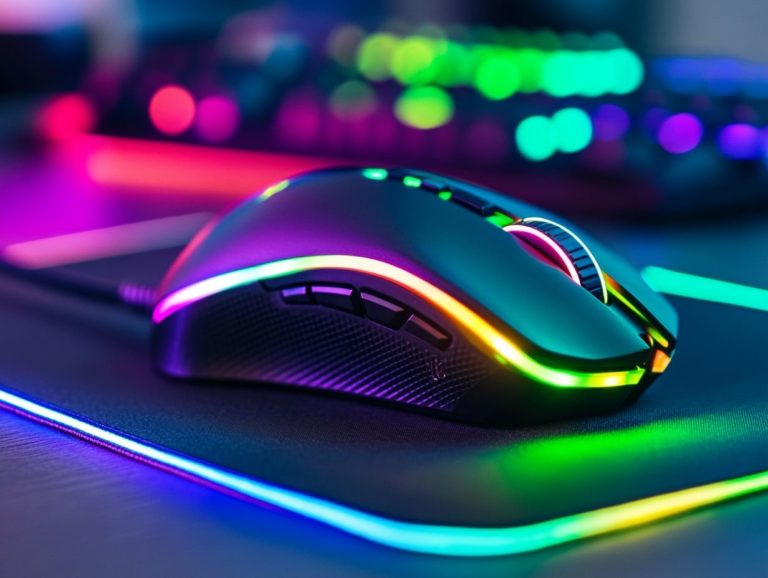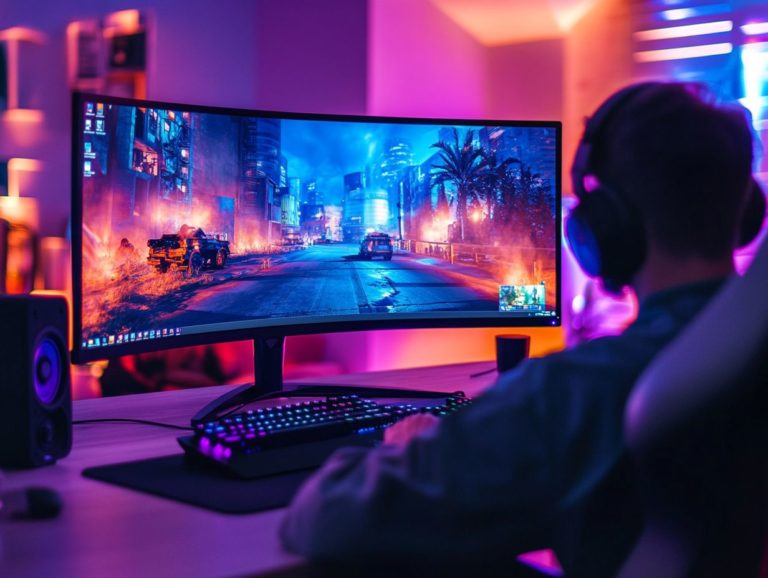how does refresh rate affect gaming experience?
Refresh rate is an important aspect of your gaming experience, affecting everything from the clarity of visuals to the overall performance of your setup.
Get ready to dive into the exciting world of refresh rates and how they can transform your gaming! This article explores the meaning of refresh rate and its significance, especially for gamers like you. You ll discover how it influences gameplay, learn how to select the ideal refresh rate for your configuration, and uncover valuable tips to enhance your experience.
We ll also tackle common misconceptions that may be hindering your performance. Prepare to elevate your gaming to new heights!
Contents
- Key Takeaways:
- Understanding Refresh Rate
- How Refresh Rate Affects Gaming
- Choosing the Right Refresh Rate for Your Gaming Setup
- Improving Gaming Experience with Higher Refresh Rate
- Common Misconceptions about Refresh Rate and Gaming
- Frequently Asked Questions
- What is refresh rate, and why does it matter for gaming?
- Does the refresh rate of my monitor affect all types of games?
- What is the ideal refresh rate for gaming?
- Can my graphics card affect how refresh rate impacts my gaming experience?
- Do all games support high refresh rates?
- Is it worth investing in a high refresh rate monitor for gaming?
Key Takeaways:
- Higher refresh rates lead to smoother and more responsive gameplay, enhancing the overall gaming experience.
- The optimal refresh rate depends on several factors such as device capabilities, game type, and personal preference.
- Don’t fall for common misconceptions about refresh rate and gaming do your research and choose the right rate for you.
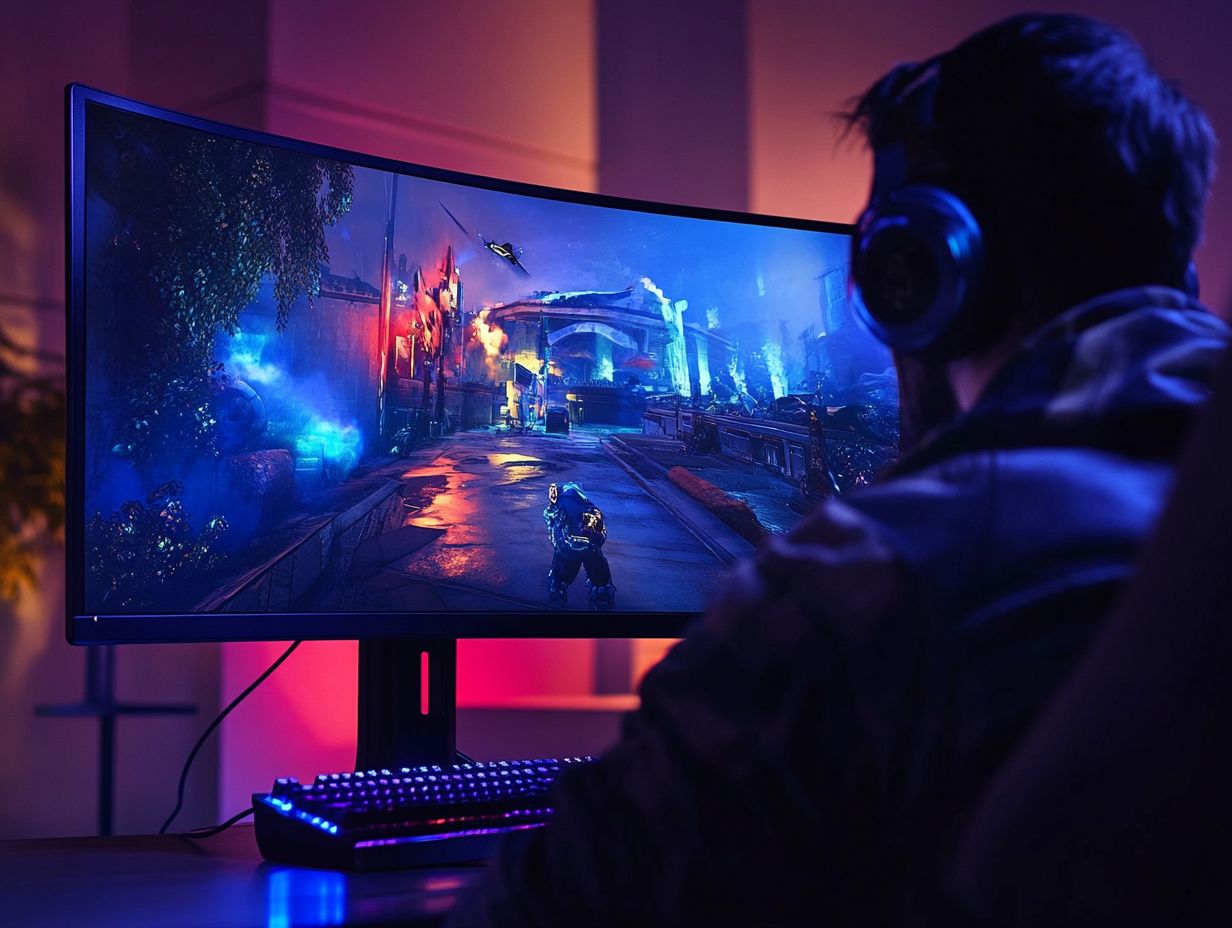
Understanding Refresh Rate
The refresh rate of a monitor plays a crucial role in shaping your gaming experience. Measured in hertz (Hz), it indicates how many frames are displayed each second.
A higher refresh rate can dramatically enhance visual clarity and smoothness, transforming fast-paced competitive games into fluid and immersive experiences.
Grasping this concept is vital for gamers like you who aim to optimize their setup and fully leverage the latest advancements in gaming monitors and adaptive sync technologies.
Definition and Importance
The refresh rate is the number of times your display updates with new information each second, making it a crucial element of your gaming performance.
When you opt for a higher refresh rate, you significantly enhance how visual elements come to life on your screen. You’ll notice smoother transitions and a reduction in motion blur during intense, fast-paced moments.
This enhancement truly shines when you experience increased frame rates. Frame rates are how many images your monitor shows every second, resulting in fluid animations and sharper details.
When paired with optimal screen resolution, the benefits multiply, allowing visual fidelity to shine. A well-synced refresh rate ensures that the images produced by your graphics card are displayed at their absolute best.
This leads not only to improved gameplay mechanics but also to a more immersive gaming experience overall.
How Refresh Rate Affects Gaming
The refresh rate is essential to your gaming experience, as it significantly impacts visuals, frame rates, and the overall smoothness of gameplay.
A higher refresh rate reduces screen tearing and input lag, giving you a competitive advantage, particularly in fast-paced FPS games. Conversely, lower refresh rates can result in ghosting and tearing, which may disrupt game logic and performance.
Therefore, it s imperative to choose a monitor with a suitable refresh rate that complements your gaming setup.
Impact on Visuals and Performance
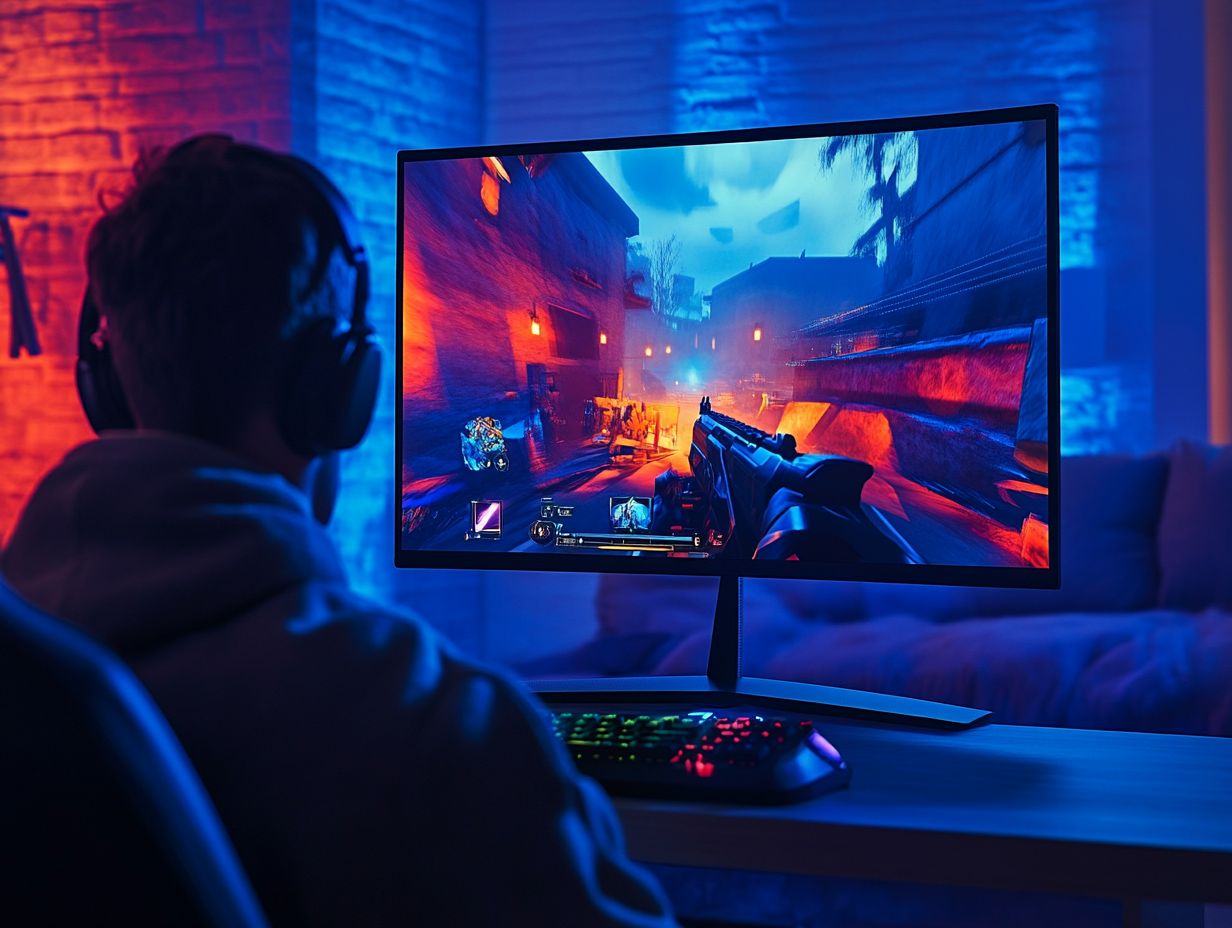
A higher refresh rate significantly enhances your visuals and performance in competitive games, offering you a smoother and more responsive experience.
You ll see this improvement right away when you pair it with an optimal frame rate that complements your display’s capabilities.
As you fine-tune your graphics settings, the interplay between refresh rates and frame rates becomes essential. A mismatch can result in stuttering or tearing, pulling you out of the immersive gaming experience.
Many gamers discover that by elevating their graphics settings while ensuring a consistent frame rate, they can fully appreciate the rich details and vibrant colors of in-game environments.
Ultimately, achieving a harmonious balance among these elements not only boosts your performance but also amplifies your satisfaction during those intense gaming sessions.
Choosing the Right Refresh Rate for Your Gaming Setup
Selecting the ideal refresh rate for your gaming setup can truly enhance your gaming performance, especially in competitive scenarios. Don t wait! Choosing the right refresh rate can be the game-changer you need for your competitive edge!
Monitors boasting refresh rates of 144Hz to 240Hz are particularly favored for FPS gaming, where every millisecond truly matters. These higher refresh rates can significantly boost your ability to respond quickly and effectively to in-game developments.
It s crucial for you to understand your system’s configurations, including the capabilities of your CPU and GPU, in order to determine the optimal refresh rate that aligns with your performance needs.
Factors to Consider
When selecting a monitor, several key factors need consideration. These include input lag, gaming settings, and the hardware capabilities of your system.
Understanding the details of refresh rates can profoundly elevate your gaming experience. Input lag, the delay between your actions and what you see on the screen, is crucial. Lower input lag ensures your actions translate swiftly on-screen, giving you that competitive edge you crave.
Adaptive sync technologies, like FreeSync and G-SYNC, play a significant role as well. They eliminate screen tearing and stuttering, resulting in a smoother experience. Your choice should also be guided by the performance requirements of the games you play. Demanding titles might require a higher refresh rate, so assess whether upgrading your hardware is essential to achieve optimal settings.
By balancing these factors, you ll create a more immersive gameplay experience that truly brings your games to life.
Improving Gaming Experience with Higher Refresh Rate
Enhancing your gaming experience with a higher refresh rate can transform gameplay into a remarkably smooth adventure. It minimizes visual artifacts like ghosting and tearing.
Opting for monitors with refresh rates of 144Hz or higher provides superior visuals and performance, crucial for competing effectively in high-stakes scenarios.
When paired with the right performance benchmarks, achieving elevated refresh rates can truly take your gaming to new heights.
Benefits and Tips
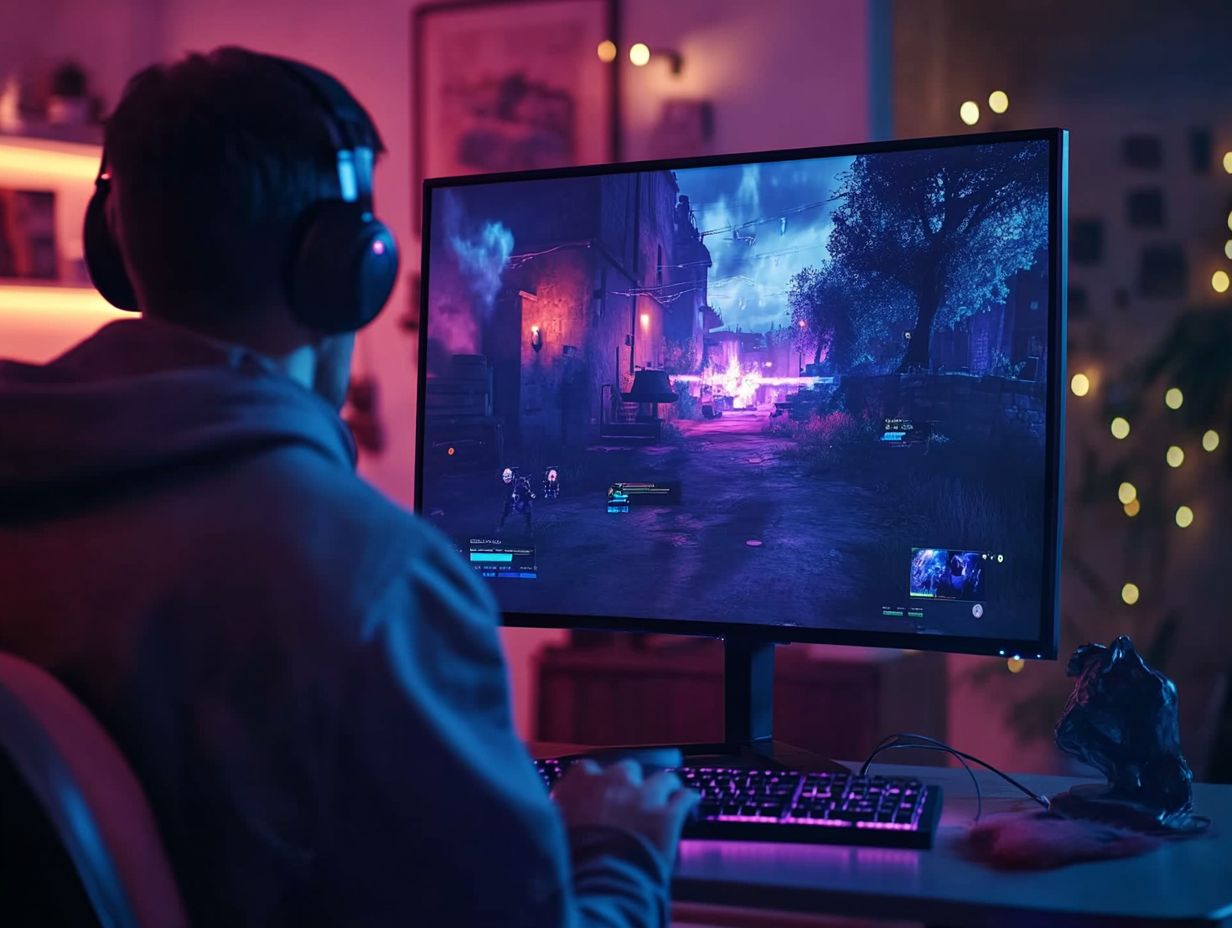
The benefits of higher refresh rates are remarkable. They lead to enhanced gaming performance, reduced input lag, and improved responsiveness especially in competitive scenarios.
To fully embrace these advantages, consider using adaptive sync technologies like NVIDIA G-Sync or AMD FreeSync. These technologies adjust your monitor’s refresh rate to match your graphics card’s output, effectively minimizing screen tearing.
Fine-tuning your graphics settings can significantly improve performance. Lowering certain graphics options might achieve higher frame rates, allowing you to unlock your display s full potential.
Stay informed about the latest advancements in gaming monitors, particularly those boasting higher resolutions and faster response times. These can elevate your overall gaming experience, making gameplay smoother and more immersive.
Common Misconceptions about Refresh Rate and Gaming
You might encounter misconceptions about refresh rate and its influence on gaming performance, especially regarding ghosting and tearing. These details are often overlooked by many gamers, yet they play a crucial role in the overall experience.
Debunking Myths
One common myth is that higher refresh rates don’t significantly enhance your gaming experience or affect benchmark average FPS. This couldn’t be further from the truth.
In reality, a higher refresh rate delivers noticeably smoother motion and improved responsiveness, especially in fast-paced games like first-person shooters or racing titles. Research indicates that gamers who use 144Hz monitors report greater satisfaction compared to those stuck with 60Hz displays, often highlighting a competitive advantage in precision and reaction time.
Studies demonstrate a direct link between frame rates and the ability to track moving targets effectively. For example, a gamer operating at 240Hz can react up to 30% faster than someone at 60Hz. These statistics emphasize the crucial role of refresh rates in gaming scenarios and effectively debunk any lingering myths about their minimal impact.
Frequently Asked Questions
What is refresh rate, and why does it matter for gaming?
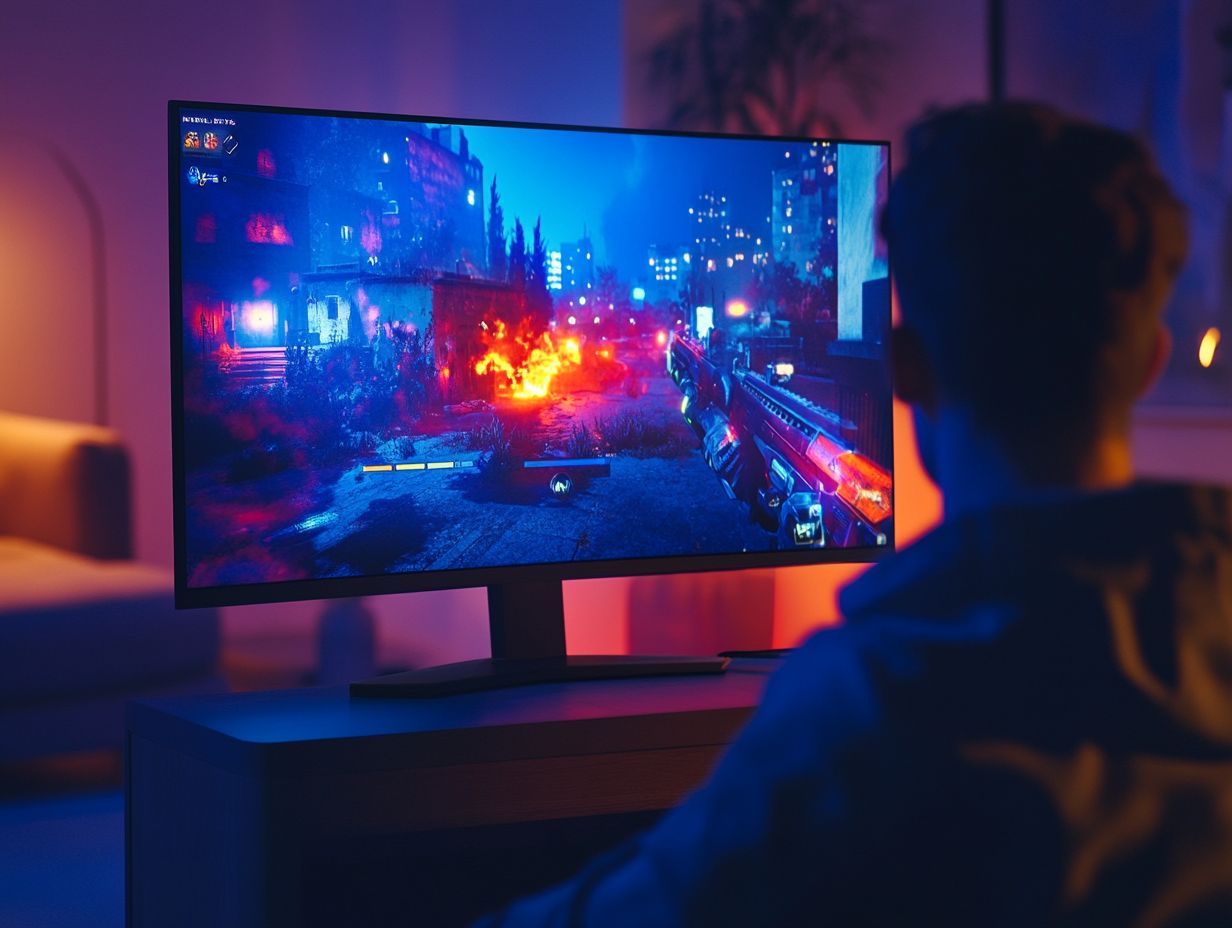
Refresh rate refers to the number of times an image is updated on the screen per second. Measured in Hertz (Hz), a higher refresh rate means a smoother and more responsive gaming experience. It allows for more frames to be displayed in a shorter time, reducing motion blur and input lag.
Don t miss out on the competitive edge that a higher refresh rate can provide! Consider checking your current monitor or upgrading for an enhanced experience.
Does the refresh rate of my monitor affect all types of games?
Yes, the refresh rate of your monitor affects all games. This includes fast-paced shooters and slower strategy games. However, the impact is more noticeable in fast-paced games where quick reactions are essential.
What is the ideal refresh rate for gaming?
The ideal refresh rate for gaming is typically 144 Hz. This allows for a smooth experience without breaking the bank. Some gamers even prefer refresh rates of 240 Hz for maximum fluidity.
Can my graphics card affect how refresh rate impacts my gaming experience?
Yes, your graphics card is key to your gaming experience. A high refresh rate monitor won t help if your graphics card can t produce enough frames per second.
Do all games support high refresh rates?
No, not all games support high refresh rates. Older or less demanding games might be limited to 60 Hz, but many newer titles allow you to adjust the refresh rate in settings.
Is it worth investing in a high refresh rate monitor for gaming?
It depends on your preferences and budget. If you enjoy competitive gaming or want a smooth experience, investing in a high refresh rate monitor is worthwhile. If you mainly play slower games or have a tight budget, a lower refresh rate monitor may be just fine.


